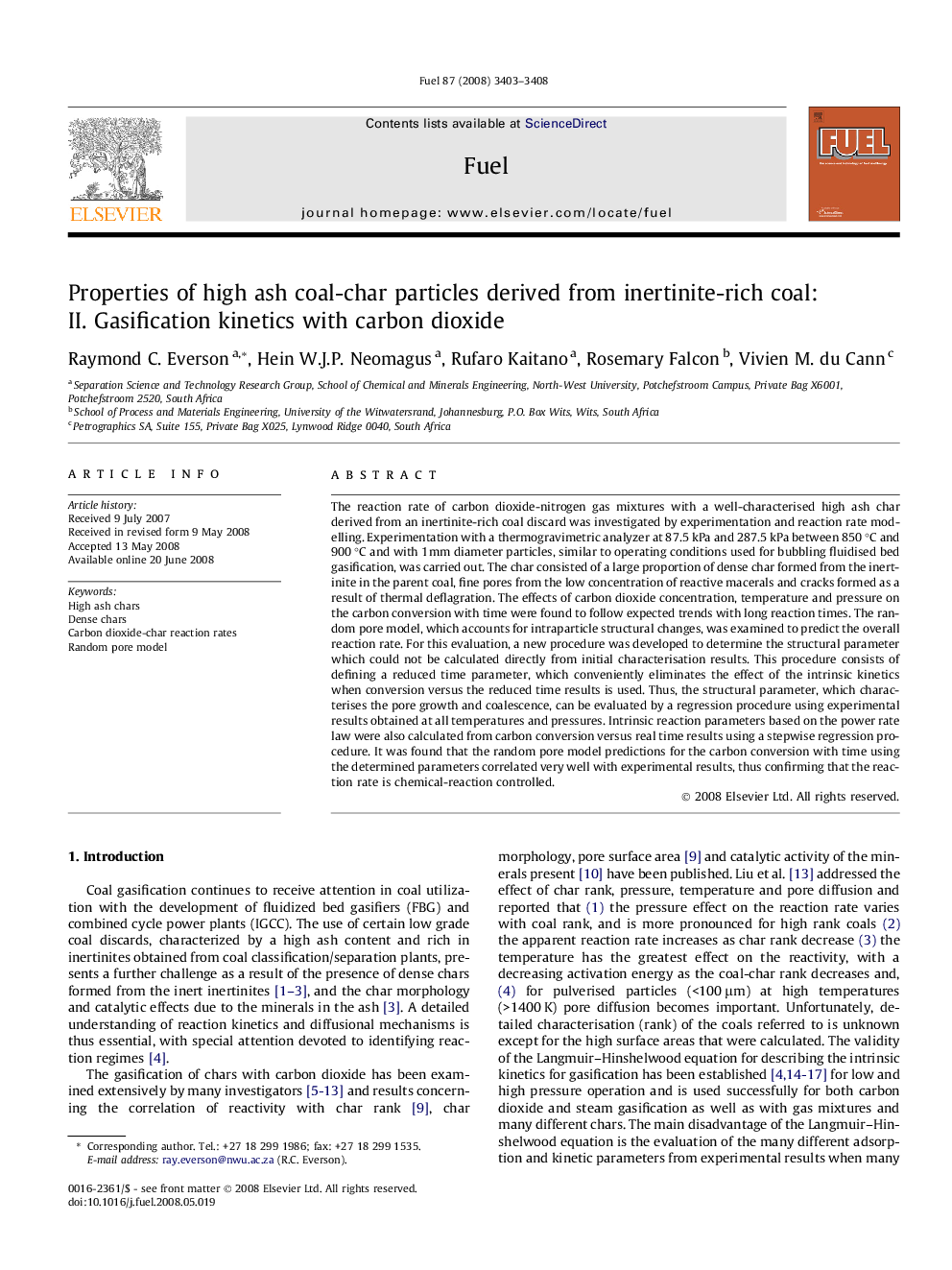| Article ID | Journal | Published Year | Pages | File Type |
|---|---|---|---|---|
| 208251 | Fuel | 2008 | 6 Pages |
The reaction rate of carbon dioxide-nitrogen gas mixtures with a well-characterised high ash char derived from an inertinite-rich coal discard was investigated by experimentation and reaction rate modelling. Experimentation with a thermogravimetric analyzer at 87.5 kPa and 287.5 kPa between 850 °C and 900 °C and with 1mm diameter particles, similar to operating conditions used for bubbling fluidised bed gasification, was carried out. The char consisted of a large proportion of dense char formed from the inertinite in the parent coal, fine pores from the low concentration of reactive macerals and cracks formed as a result of thermal deflagration. The effects of carbon dioxide concentration, temperature and pressure on the carbon conversion with time were found to follow expected trends with long reaction times. The random pore model, which accounts for intraparticle structural changes, was examined to predict the overall reaction rate. For this evaluation, a new procedure was developed to determine the structural parameter which could not be calculated directly from initial characterisation results. This procedure consists of defining a reduced time parameter, which conveniently eliminates the effect of the intrinsic kinetics when conversion versus the reduced time results is used. Thus, the structural parameter, which characterises the pore growth and coalescence, can be evaluated by a regression procedure using experimental results obtained at all temperatures and pressures. Intrinsic reaction parameters based on the power rate law were also calculated from carbon conversion versus real time results using a stepwise regression procedure. It was found that the random pore model predictions for the carbon conversion with time using the determined parameters correlated very well with experimental results, thus confirming that the reaction rate is chemical-reaction controlled.
